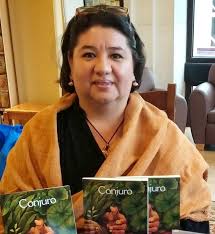
Line Breaks Literary Reading Series, curated by poet Thandiwe Shiphrah, has been supporting local and visiting poets and storytellers from different cultures by hosting readings, writing workshops, performances and special events for more than 15 years. In 2018, Line Breaks welcomed, Xanath Caraza, a nationally and internationally renowned Mexican poet and recipient of the 2015 International Book Award for Poetry, to recite poetry from her latest book, Conjuro, and host a writing workshop that focused on the journey through the multicultural identity of Mexicans, especially focused on the influence and impact of African culture in Mexico as the Third Root of Mexico.
We caught up with Ms. Caraza to dive a little deeper into how the Third Root of Mexico has become central to her narrative and theme in her poetry and the importance of understanding and revering multicultural identity.
We caught up with Ms. Caraza to dive a little deeper into how the Third Root of Mexico has become central to her narrative and theme in her poetry and the importance of understanding and revering multicultural identity.
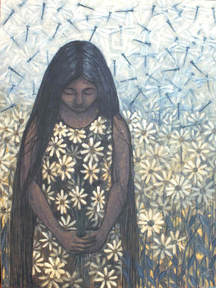 La Nina Que Corto La Flor
La Nina Que Corto La Flor Please define The Third Root of Mexico for those who have never heard of it.
The understanding of the complexity and diversity of Mexico is still a work in progress for Mexicans and the world. There are three main roots in what we understand as Mexico, the first root is indigenous. This includes sixty-eight indigenous languages spoken today in Mexico, therefore sixty-eight cultural manifestations through music, art, food and more. What is customarily referred to as the second root of Mexico is its European ancestry, mainly from Spain. In history classes in Mexico reference to the third root is African ancestry, which is as diverse or more so than the original indigenous cultures from Mexico. The third root is a mixture of many African cultures that were brought to the Americas during colonial times and shaped our understanding of what Mexico and Latin America are today. Music, art, clothing, literature, and many historical events in Mexico and Latin America have their origins within African cultures, brought by those who were enslaved and survived the Middle Passage to the Americas.
How have your cultural background and family history sparked your interest in exploring The Third Root and in writing in three languages?
In terms of the multicultural aspects of my work, I’m concerned with linguistic expressions, education, race, women’s rights, origin and history. For my first poetry collection, I was able to convince my mother to help me translate “Mujer” into Nahuatl, “Sihualt”. Showing the poem in Spanish, English and Nahuatl is a definite opportunity to celebrate my indigenous roots and the fact that the US is also part of me. I also tried to include Nahuatl as much as my ability to use the language allowed. I have always explained that I don’t speak Nahuatl fluently; I wish I did. However, I grew up listening to it and I do remember sounds, and mostly rhythms, of the Nahuatl language. They were green sounds, from the open spaces of my grandmother’s indigenous community. Consciously, I’ve included them, because I’m proud to belong to one of the oldest original groups of people in the Americas. Here is a stanza of “Mujer / Sihuatl”, and you can here me read the poem here.
Rayo de luna
Vientre fértil que devora y da vida
Hoja que cae con el otoño
Manos que peinan, manos que hornean, manos que limpian
Ray of the moon
Fertile womb that devours and brings life
Leaf that falls in autumn
Hands that comb, hands that bake, hands that clean
Sahuantli tlen messtli
Sihuayo tlamantiketl tlen tlapasulmana uan texmaka tonenlis
Sihuatl tlen uesi ika ne meestli
Majtli tlen tshiljuia, majtli tlen tlaikxitia, majtli tlen tlapopoua
I have also tried to celebrate my African heritage through my writing. “Yanga” is a poem where I celebro las palabras, la gente, la ascendencia and Louis Reyes Rivera. Meeting Louis Reyes Rivera in Kansas City was a life changing experience for me. He was a professor, an excellent performer, a Latino, Puerto Rican, and not just Latino, African Latino. The combination of everything that makes up who he is was key for me. In a manner, he summarized in life, right in front of my eyes, what I was looking for. As I have mentioned before, I have an indigenous background and Spanish, too. As well, I know I have an African background, both from northern Africa and because of the fact that I am from Veracruz, and it is through the Port of Veracruz that the people who were enslaved were brought to Mexico. I likely have African blood for that reason, too. When I heard Louis Reyes Rivera read his work, I was completely moved. He read from his book, Scattered Scriptures, both in Spanish, English, Spanglish. The rhythms he produced in front of me were incredible.
Could you talk a little about some of the cultural manifestations in Mexican culture, such as myths, historical figures, and indigenous stories and beliefs?
Yanga is one of my favorite historical figures from Mexico. In Veracruz, we learn about Yanga early in grammar school, and as mentioned in the poem there is a town named after him. At the University of Missouri-Kansas City I took a course, where I decided to write my final paper about African influences in Mexico. I prepared with a great deal of sources, and I was also invited to present about African Mexicans at the American Jazz Museum in Kansas City. There are other African historical figures in Mexican history, but Yanga had already been playing those drums for me for a long time. I try to imagine him, first surviving from wherever he was caught in inland Africa and taken to the coast, most likely in West Africa. Then it impacts me to think about the fact of having survived the actual Middle Passage from West Africa to Cuba most likely. Finally, he must have traveled from Cuba to Veracruz, still in the worst of conditions. Then can you imagine being sold at the slave market in the port of Veracruz, having lived in terrible conditions? Finally, in spite of everything, he had the courage and both the physical and mental strength to escape and along the way organize other runaway people who had been enslaved. In the end, their settlement was attacked at least one time that we know of. This settlement was finally recognized as the first free zone in the American colonies. Of course, the scary side of the story is that if any of the new free African men were caught outside the limits of the village, they could be returned to slavery. However, I think that what he did was amazing, and very important for Mexican and Latin American history. He should be celebrated much more frequently. Now, in relation to my word selection, I believe, or at least want to believe, that those are the words that Yanga most likely said aloud, too. That was his language and through my voice he is with us. I don’t have anything of his, but it is his words and his courage that needs to be remembered. Here is a link where you can hear me read “Yanga” in Spanish.
As for the sound-driven form, that was thanks to Louis Reyes Rivera. If you listen to him, you’ll see what I’m talking about, and his words, “Never be afraid of the inner sounds you hear.”
Another historical figure from Mexico is the female pre-Hispanic poet Macuilxochitzin. I have written two different poems on her. “Macuilxochitzin”, the first poem from my book Conjuro (Mammoth Publications, 2012) is a poem in which I want to celebrate women and pre-Hispanic poets. Macuilxochitzin is the only female, Aztec poet historically recognized. We have a fragment of a poem from her; we know her name and we know that she was a female poet. Here is a stanza of that first poem.
Macuilxochitzin,
poet with obsidian blood
Let the chants begin!
Let the dance start!
¡yn in cuicatl!
¡yn maconnetotilo!
The second poem I wrote on Macuilxochitzon is titled “Tejedora de palabras / Weaver of words” from my book Ocelocíhuatl (Mouthfeel Press, 2015) and you can hear me read the poem in the following link, what is more, see an image that the Smithsonian Latino Center created based on Macuilxochitzin. Here is the link for my bilingual poem “Tejedora de palabras (in Spanish) / Weaver of Words (in English)”.
One more historical figure I would like to mention is La Mulata de Córdoba. She was an African Mexican healer and midwife from the state of Veracruz, Mexico and born as a free individual around 1780 at a time when many African Mexican people were enslaved. You can read more on La Mulata de Córdoba here, and hear my bilingual poem based on her in the following links: “Vestida de cempasúchiles” (in Spanish) and “Dressed in Marigolds” (in English).
How do the indigenous, Spanish and African aspects of Mexican culture intersect and what influence do they have on modern Mexican society?
The first aspect that comes to mind is music, especially el Son Jarocho in Veracruz, a combination of African rhythms, Spanish instruments and in many occasions Indigenous verses. Food is another cultural manifestation also in the state of Veracruz. We have dishes heavily influenced by African cultures, Indigenous cultures and Spanish culture. In terms of art, Israel Nazario, from the city of Oaxaca, is a contemporary Mexican artist. Among other topics in his painting, he is depicting the African Mexican diaspora from la Costa Chica de Oaxaca. I have used some of his painting to respond with my poetry. For example, “De tus manos/Out of Your Hands” and “Matilde en la hamaca/Matilde in the Hammock” are two poems from my book Corazón Pintado (2015) where I respond to Nazario’s African Mexican images.
What would you like your readers and audiences to know about the homeland and experiences of your ancestors and their influence on you as a daughter, a writer and an American?
In my writing there is a great deal of memory. There is the impulse or desire to leave a trace in the world, in my particular case with words. I’d like to share with my readers what I have experienced, seen, felt. Alongside my memories, there is the memory of my people, my indigenous roots, my African roots, my Mexican roots. I am proud of them, I am part of them, in my veins runs indigenous and African blood.
The understanding of the complexity and diversity of Mexico is still a work in progress for Mexicans and the world. There are three main roots in what we understand as Mexico, the first root is indigenous. This includes sixty-eight indigenous languages spoken today in Mexico, therefore sixty-eight cultural manifestations through music, art, food and more. What is customarily referred to as the second root of Mexico is its European ancestry, mainly from Spain. In history classes in Mexico reference to the third root is African ancestry, which is as diverse or more so than the original indigenous cultures from Mexico. The third root is a mixture of many African cultures that were brought to the Americas during colonial times and shaped our understanding of what Mexico and Latin America are today. Music, art, clothing, literature, and many historical events in Mexico and Latin America have their origins within African cultures, brought by those who were enslaved and survived the Middle Passage to the Americas.
How have your cultural background and family history sparked your interest in exploring The Third Root and in writing in three languages?
In terms of the multicultural aspects of my work, I’m concerned with linguistic expressions, education, race, women’s rights, origin and history. For my first poetry collection, I was able to convince my mother to help me translate “Mujer” into Nahuatl, “Sihualt”. Showing the poem in Spanish, English and Nahuatl is a definite opportunity to celebrate my indigenous roots and the fact that the US is also part of me. I also tried to include Nahuatl as much as my ability to use the language allowed. I have always explained that I don’t speak Nahuatl fluently; I wish I did. However, I grew up listening to it and I do remember sounds, and mostly rhythms, of the Nahuatl language. They were green sounds, from the open spaces of my grandmother’s indigenous community. Consciously, I’ve included them, because I’m proud to belong to one of the oldest original groups of people in the Americas. Here is a stanza of “Mujer / Sihuatl”, and you can here me read the poem here.
Rayo de luna
Vientre fértil que devora y da vida
Hoja que cae con el otoño
Manos que peinan, manos que hornean, manos que limpian
Ray of the moon
Fertile womb that devours and brings life
Leaf that falls in autumn
Hands that comb, hands that bake, hands that clean
Sahuantli tlen messtli
Sihuayo tlamantiketl tlen tlapasulmana uan texmaka tonenlis
Sihuatl tlen uesi ika ne meestli
Majtli tlen tshiljuia, majtli tlen tlaikxitia, majtli tlen tlapopoua
I have also tried to celebrate my African heritage through my writing. “Yanga” is a poem where I celebro las palabras, la gente, la ascendencia and Louis Reyes Rivera. Meeting Louis Reyes Rivera in Kansas City was a life changing experience for me. He was a professor, an excellent performer, a Latino, Puerto Rican, and not just Latino, African Latino. The combination of everything that makes up who he is was key for me. In a manner, he summarized in life, right in front of my eyes, what I was looking for. As I have mentioned before, I have an indigenous background and Spanish, too. As well, I know I have an African background, both from northern Africa and because of the fact that I am from Veracruz, and it is through the Port of Veracruz that the people who were enslaved were brought to Mexico. I likely have African blood for that reason, too. When I heard Louis Reyes Rivera read his work, I was completely moved. He read from his book, Scattered Scriptures, both in Spanish, English, Spanglish. The rhythms he produced in front of me were incredible.
Could you talk a little about some of the cultural manifestations in Mexican culture, such as myths, historical figures, and indigenous stories and beliefs?
Yanga is one of my favorite historical figures from Mexico. In Veracruz, we learn about Yanga early in grammar school, and as mentioned in the poem there is a town named after him. At the University of Missouri-Kansas City I took a course, where I decided to write my final paper about African influences in Mexico. I prepared with a great deal of sources, and I was also invited to present about African Mexicans at the American Jazz Museum in Kansas City. There are other African historical figures in Mexican history, but Yanga had already been playing those drums for me for a long time. I try to imagine him, first surviving from wherever he was caught in inland Africa and taken to the coast, most likely in West Africa. Then it impacts me to think about the fact of having survived the actual Middle Passage from West Africa to Cuba most likely. Finally, he must have traveled from Cuba to Veracruz, still in the worst of conditions. Then can you imagine being sold at the slave market in the port of Veracruz, having lived in terrible conditions? Finally, in spite of everything, he had the courage and both the physical and mental strength to escape and along the way organize other runaway people who had been enslaved. In the end, their settlement was attacked at least one time that we know of. This settlement was finally recognized as the first free zone in the American colonies. Of course, the scary side of the story is that if any of the new free African men were caught outside the limits of the village, they could be returned to slavery. However, I think that what he did was amazing, and very important for Mexican and Latin American history. He should be celebrated much more frequently. Now, in relation to my word selection, I believe, or at least want to believe, that those are the words that Yanga most likely said aloud, too. That was his language and through my voice he is with us. I don’t have anything of his, but it is his words and his courage that needs to be remembered. Here is a link where you can hear me read “Yanga” in Spanish.
As for the sound-driven form, that was thanks to Louis Reyes Rivera. If you listen to him, you’ll see what I’m talking about, and his words, “Never be afraid of the inner sounds you hear.”
Another historical figure from Mexico is the female pre-Hispanic poet Macuilxochitzin. I have written two different poems on her. “Macuilxochitzin”, the first poem from my book Conjuro (Mammoth Publications, 2012) is a poem in which I want to celebrate women and pre-Hispanic poets. Macuilxochitzin is the only female, Aztec poet historically recognized. We have a fragment of a poem from her; we know her name and we know that she was a female poet. Here is a stanza of that first poem.
Macuilxochitzin,
poet with obsidian blood
Let the chants begin!
Let the dance start!
¡yn in cuicatl!
¡yn maconnetotilo!
The second poem I wrote on Macuilxochitzon is titled “Tejedora de palabras / Weaver of words” from my book Ocelocíhuatl (Mouthfeel Press, 2015) and you can hear me read the poem in the following link, what is more, see an image that the Smithsonian Latino Center created based on Macuilxochitzin. Here is the link for my bilingual poem “Tejedora de palabras (in Spanish) / Weaver of Words (in English)”.
One more historical figure I would like to mention is La Mulata de Córdoba. She was an African Mexican healer and midwife from the state of Veracruz, Mexico and born as a free individual around 1780 at a time when many African Mexican people were enslaved. You can read more on La Mulata de Córdoba here, and hear my bilingual poem based on her in the following links: “Vestida de cempasúchiles” (in Spanish) and “Dressed in Marigolds” (in English).
How do the indigenous, Spanish and African aspects of Mexican culture intersect and what influence do they have on modern Mexican society?
The first aspect that comes to mind is music, especially el Son Jarocho in Veracruz, a combination of African rhythms, Spanish instruments and in many occasions Indigenous verses. Food is another cultural manifestation also in the state of Veracruz. We have dishes heavily influenced by African cultures, Indigenous cultures and Spanish culture. In terms of art, Israel Nazario, from the city of Oaxaca, is a contemporary Mexican artist. Among other topics in his painting, he is depicting the African Mexican diaspora from la Costa Chica de Oaxaca. I have used some of his painting to respond with my poetry. For example, “De tus manos/Out of Your Hands” and “Matilde en la hamaca/Matilde in the Hammock” are two poems from my book Corazón Pintado (2015) where I respond to Nazario’s African Mexican images.
What would you like your readers and audiences to know about the homeland and experiences of your ancestors and their influence on you as a daughter, a writer and an American?
In my writing there is a great deal of memory. There is the impulse or desire to leave a trace in the world, in my particular case with words. I’d like to share with my readers what I have experienced, seen, felt. Alongside my memories, there is the memory of my people, my indigenous roots, my African roots, my Mexican roots. I am proud of them, I am part of them, in my veins runs indigenous and African blood.
If you would like to know more about the Line Break Literary Reading Series or to get involved, please click here. You can also learn about more upcoming programs and events in Global Education Center's Third Root of Mexico series by visiting our Events tab.

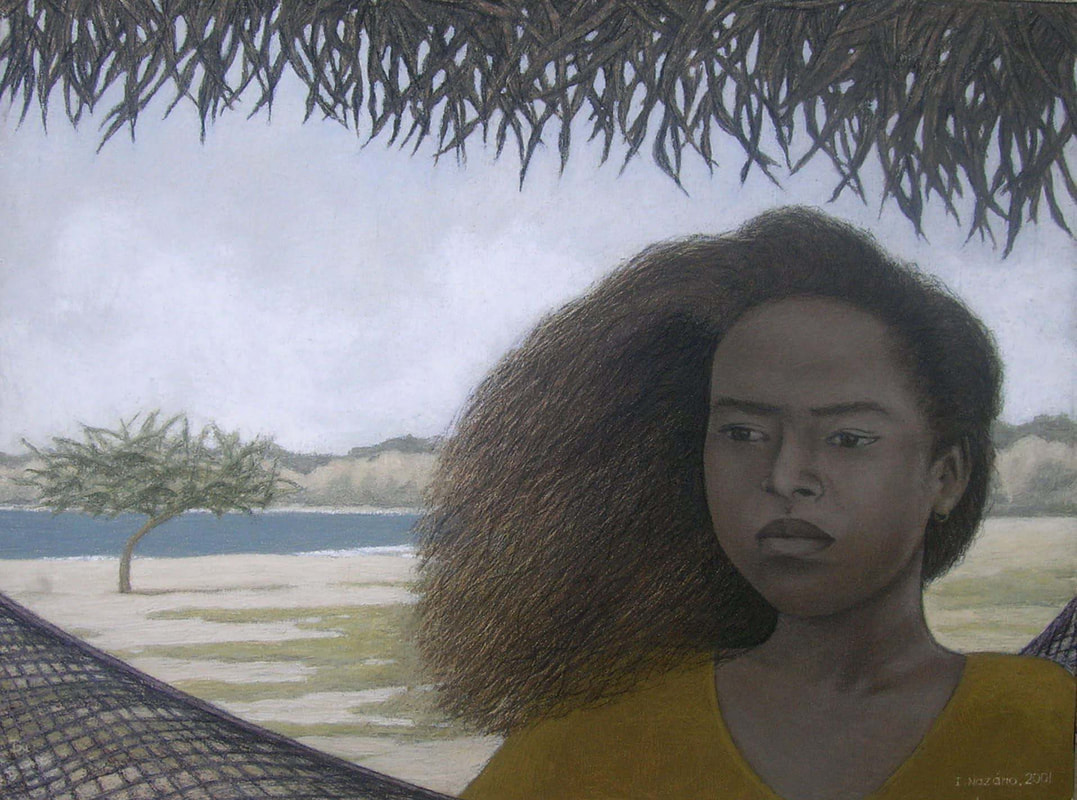
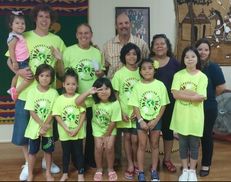
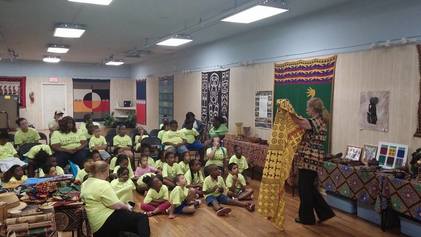
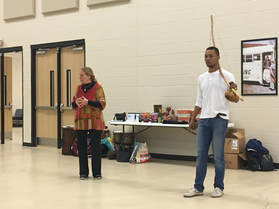
 RSS Feed
RSS Feed